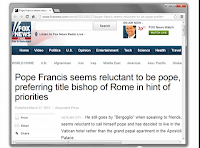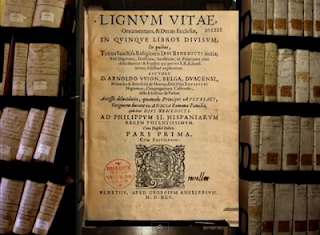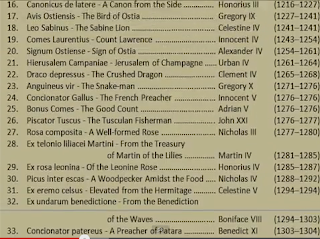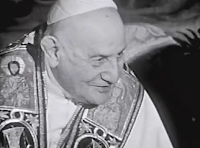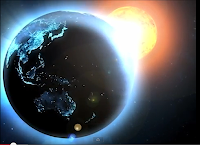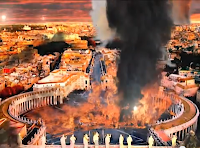Vatican II Exposed and Devastated - Vatican II's Protestant Heresy
By Bro. Peter Dimond - Most Holy Family Monastery (www.vaticancatholic.com)
_________________________________________________
"In its Decree on Ecumenism, Unitatis Redintegratio, #3, Vatican II teaches that Protestants and Schismatics are in the Church of Christ.
Speaking of the divisions or rifts that exist between the Catholic Church and the Protestant and "Orthodox" communities, and how such communities dissent from or reject Catholic teaching, Vatican II declares "Nonetheless, those justified by faith in Baptism are incorporated into Christ, and for that reason they are decorated by right with the Christian name and deservedly acknowledged as brothers in the Lord by the children of the Catholic Church."
When one considers this passage in the original Latin, the heretical nature of Vatican II's assertion becomes strikingly clear.
Speaking of the members of Protestant and Schismatic communities and specifically about how those communities and their members dissent from, that is to say, reject the position of the Catholic Church in matters of doctrine, Vatican II declares Nihilominus, meaning nonetheless.
The Latin word Nihilominus is a combination of the word nihil, meaning nothing, and the word minus, meaning less.
 |
| Vatican II's Decree on Ecumenism - Latin translation |
Vatican II clearly teaches, that all the baptised who claim to believe in Jesus, even if they reject Catholic teaching are incorporated into Christ, they're in Christ. That's heresy!
It is directly contrary to Catholic Dogma. Catholic Dogma teaches all who dissent from Catholic Doctrine are outside the Church of Christ, as we will see.
 |
| St. Paul's Epistles |
In fact it's very interesting to note that throughout the epistles of St. Paul, he uses the term 'in Christ' to refer to those in the Church of Christ.
According to Scripture and Catholic teaching, to be 'in Christ' is to be in the Church.
To be incorporated into Christ is to be incorporated into the Church, the Body of Christ. If you consult the Latin Vulgate, you will see 'in Christo,' 'in Christo,' over and over again, to denote those in the Church or in the Body of Christ.
Indeed, 'incorporantur' which Vatican II uses here, is the third person plural, present indicative, passive form of the verb 'incorporare, to incorporate.
This word, incorporantur, is grammatically cognate or connected with the Latin word 'corpus,' meaning 'Body.'
Those who are incorporated are put into the body. Those who are incorporated into Christ are put into the Body of Christ.
That this is the indisputable meaning of Vatican II's assertion is precisely why the translation of this very phrase, Christo incorporantur, which we find on the Vatican's own website in the Decree on Ecumenism, is given as 'are members of Christ's body.'
The Vatican's translation, 'members of Christ's body,' is not exact, for Christo incorporantur precisely means 'are incorporated into Christ,' but the Vatican's rendering 'members of Christ's body,' precisely captures the theological meaning of Vatican II's assertion.
Vatican II is saying that all the baptised who claim to believe in Jesus, despite differences in doctrine and dissent from Catholic teaching, are incorporated into Christ and those incorporated into Christ are indeed members of Christ's body.
Vatican II's assertion that those who dissent from Catholic doctrine, are in Christ, is blatantly heretical!
The Church teaches the opposite! The Church dogmatically and infallibly teaches that all who dissent from Catholic teaching are outside of Christ, alien to the Church and His Body.
The Council of Florence infallibly declared, "It [ The Holy Roman Church ] condemns, rejects and anathematizes all who thinking opposed and contrary things, and declares them to be aliens [alienos] from the Body of Christ, which is the Church."
Note that the Council defines that those who dissent from Catholic teaching, are not just aliens from the Catholic Church, but aliens from the Body of Christ, which is the Church. They're aliens from Christ and His Body.
This is very important, for the Vatican II Church and Vatican II itself, will acknowledge certain degrees of separation between its so-called Catholic Church and the Protestant and "Orthodox" communities.
According to Vatican II, the "Catholic," "Orthodox" and Protestant communities are in communion, with one another. They are all in the Church of Christ, but they are not in full communion because they have doctrinal differences.
Vatican II teaches that the Church of Christ is like one big plane. The plane contains all the baptised who claim to believe in Jesus as we just saw. The Catholics who have the fullness of the truth Christ taught, sit in the First Class section of the plane, and the "Orthodox" and Protestants sit in less luxurious sections, but they are all together on the same plane, despite divisions between sections of the plane.
That's the teaching of Vatican II that despite the doctrinal differences they are all 'in Domino, 'Christo incorporantur,' that is, in the Lord, or incorporated into Christ, in the Church etc.
The dogmatic definition we just considered from the Council of Florence, that those who think contrary things to the Roman Church are aliens from the Body of Christ, proves that Vatican II's teaching is heretical, and there are many other quotes from Popes on the same point.
The truth defined by the Council of Florence was infallibly repeated by Pope Leo XIII, in his encyclical 'Satis Cognitum'.
Speaking of the Church of Christ, Pope Leo taught "The practice of the Church has always been the same, as is shown by the unanimous teaching of the Fathers, who were wont to hold as OUTSIDE Catholic communion and ALIEN TO THE CHURCH whoever would recede in the least degree from any point of doctrine proposed by Her authoritative Magisterium,"
This statement is an infallible reiteration of Catholic dogma, for Pope Leo XIII teaches that the Church has always had the same teaching on this matter. This teaching cannot change.
Those who dissent from Catholic teaching are not in Christ, they're alien to Him and His Church, that's because there's only one faith, and those who reject a Catholic dogma lose the faith which one must have to be in Christ and in the Church.
As Pope Clement V dogmatically defined at the Council of Vienne, 1311-1312, concerning the one Church of Christ, "one is the universal Church ... outside of which absolutely no one is saved ... one is the Lord, one is the faith and one is the baptism of all ..."
As Pope Pius XI taught in Mortalium Animos #9, Jun 6, 1928, "the unity of the Church of Christ is predicated upon one law of belief, and one faith of Christians ..."
As Pope Pius VII taught in Diu Satis, #15, May 15, 1800, concerning those who resist the authority of the Papacy: "Those who do not comply are certainly not to be counted among the sheep of Christ."
As Pope Leo XII taught in Charitas Christi, #11, Dec 25, 1825, repeating Jesus' proclamation in Matthew 18:17, "Whoever does not hear the Church, let him be to you like a heathen and a publican."
Those who don't hear the Church are not in Domino, they are considered as the heathens.
As Pope Gregory XVI taught in Murari Vos #13, Aug. 15, 1832, "There is one God, one faith, one Baptism ... those who are not with Christ are against Him ... and ... they disperse unhappily who do not gather with Him. Therefore, without a doubt they will perish forever unless they hold the Catholic faith whole and inviolate ... a schismatic flatters himself falsely if he asserts that he, too, has been washed in the waters of regeneration. Indeed, Augustine would reply to such a man: 'The branch has the same form when it has been cut off from the vine, but of what profit for it is the form if it does not live from the root?'"
Note that Pope Gregory XVI emphasises that even though a Schismatic or a heretic has been duly baptised, it matters not. Such a man does not remain 'in Domino,' for he has been cut off from the vine through schism or heresy.
As Pope Pelagius II said, Dilectionis Vestrae, 585: "Does he who deserts and resists the Chair of Peter, on which the Church was founded, have confidence that he is in the Church?"
Also note that Pope Leo XIII, in reiterating and explaining the dogma, proclaimed in dozens of magisterial statements, that those who dissent from Catholic teaching, even in one point, are not in the Church of Christ, but outside of it, used the same term 'alien,' that the Council of Florence used. Florence used 'alienos,' which is the accusative plural of 'alienus' - which means foreigner: stranger: member of another or utterly distinct entity.
 |
| They are incorporated into Christ |
This word, incorporantur, is grammatically cognate or connected with the Latin word 'corpus,' meaning 'Body.'
Those who are incorporated are put into the body. Those who are incorporated into Christ are put into the Body of Christ.
That this is the indisputable meaning of Vatican II's assertion is precisely why the translation of this very phrase, Christo incorporantur, which we find on the Vatican's own website in the Decree on Ecumenism, is given as 'are members of Christ's body.'
The Vatican's translation, 'members of Christ's body,' is not exact, for Christo incorporantur precisely means 'are incorporated into Christ,' but the Vatican's rendering 'members of Christ's body,' precisely captures the theological meaning of Vatican II's assertion.
 |
| Vatican II's Decree on Ecumenism, Unitatis Redintegratio |
Vatican II's assertion that those who dissent from Catholic doctrine, are in Christ, is blatantly heretical!
The Church teaches the opposite! The Church dogmatically and infallibly teaches that all who dissent from Catholic teaching are outside of Christ, alien to the Church and His Body.
 |
| Council of Florence, 1441 |
Note that the Council defines that those who dissent from Catholic teaching, are not just aliens from the Catholic Church, but aliens from the Body of Christ, which is the Church. They're aliens from Christ and His Body.
 |
| Vatican II's 'Church of Christ' like a plane |
According to Vatican II, the "Catholic," "Orthodox" and Protestant communities are in communion, with one another. They are all in the Church of Christ, but they are not in full communion because they have doctrinal differences.
Vatican II teaches that the Church of Christ is like one big plane. The plane contains all the baptised who claim to believe in Jesus as we just saw. The Catholics who have the fullness of the truth Christ taught, sit in the First Class section of the plane, and the "Orthodox" and Protestants sit in less luxurious sections, but they are all together on the same plane, despite divisions between sections of the plane.
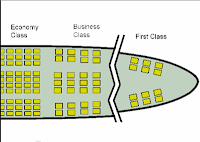 |
| Vatican II occupies 'first class' |
That's the teaching of Vatican II that despite the doctrinal differences they are all 'in Domino, 'Christo incorporantur,' that is, in the Lord, or incorporated into Christ, in the Church etc.
The dogmatic definition we just considered from the Council of Florence, that those who think contrary things to the Roman Church are aliens from the Body of Christ, proves that Vatican II's teaching is heretical, and there are many other quotes from Popes on the same point.
The truth defined by the Council of Florence was infallibly repeated by Pope Leo XIII, in his encyclical 'Satis Cognitum'.
 |
| Pope Leo XIII, Satis Cognitum |
This statement is an infallible reiteration of Catholic dogma, for Pope Leo XIII teaches that the Church has always had the same teaching on this matter. This teaching cannot change.
Those who dissent from Catholic teaching are not in Christ, they're alien to Him and His Church, that's because there's only one faith, and those who reject a Catholic dogma lose the faith which one must have to be in Christ and in the Church.
 |
| Pope Clement V |
 |
| Pope Pius XI |
As Pope Pius VII taught in Diu Satis, #15, May 15, 1800, concerning those who resist the authority of the Papacy: "Those who do not comply are certainly not to be counted among the sheep of Christ."
 |
| Pope Pius VII |
As Pope Leo XII taught in Charitas Christi, #11, Dec 25, 1825, repeating Jesus' proclamation in Matthew 18:17, "Whoever does not hear the Church, let him be to you like a heathen and a publican."
 |
| Pope Leo XII |
Those who don't hear the Church are not in Domino, they are considered as the heathens.
As Pope Gregory XVI taught in Murari Vos #13, Aug. 15, 1832, "There is one God, one faith, one Baptism ... those who are not with Christ are against Him ... and ... they disperse unhappily who do not gather with Him. Therefore, without a doubt they will perish forever unless they hold the Catholic faith whole and inviolate ... a schismatic flatters himself falsely if he asserts that he, too, has been washed in the waters of regeneration. Indeed, Augustine would reply to such a man: 'The branch has the same form when it has been cut off from the vine, but of what profit for it is the form if it does not live from the root?'"
 |
| Pope Gregory XVI |
Note that Pope Gregory XVI emphasises that even though a Schismatic or a heretic has been duly baptised, it matters not. Such a man does not remain 'in Domino,' for he has been cut off from the vine through schism or heresy.
As Pope Pelagius II said, Dilectionis Vestrae, 585: "Does he who deserts and resists the Chair of Peter, on which the Church was founded, have confidence that he is in the Church?"
 |
| Pope Pelagius II |
 |
| Pope Leo XIII uses same term as Council of Florence used |
According to Catholic dogma, dissenters from Catholic teaching are aliens from Christ and his Body, while according to Vatican II, they're in His Body, 'incorporantur,' are incorporated. In fact, Vatican II even uses the word 'dissensionis,' meaning dissensions. In a word, referring to doctrinal matters or doctrine to describe how these heretical communities reject Catholic teaching, dissent in matters of Catholic doctrine, it even says they dissent in matters concerning the structure of the Church, in other words, in regard to the Papacy.
So even though they reject the Papacy and dissent from Catholic teaching and other doctrinal matters, they remain in Christ according to Vatican II. This is totally heretical, and many other magisterial statements can be cited to condemn this evil teaching.
In fact, concerning these heretics in the Protestant and Schismatic 'Orthodox' communities, Vatican II also says 'de separationis peccato argui nequeunt.' 'Nequeunt' is the third person present plural of the verb 'nequere,' to be unable. It literally means, they are unable.
'Argui' is the present passive infinitive of 'arguare,' meaning to expose, accuse or rebuke. 'Argui' means to be accused.
 |
| Sin of Separation |
So, this actually says, 'They are unable to be accused of the sin of separation from the Catholic Church.'
Vatican II is referring to the historical separation of the Protestant and Schismatic sects from the 'full communion' of the Catholic Church. Note, that Vatican II does not teach that the Protestant and Schismatics were to blame for the original separation, but that men on both sides were at fault.
Moreover, in regard to the historical separation of the Protestant and Schismatic sects from the 'full communion' of the Catholic Church, Vatican II declares, as we just quoted, that modern day adherents of those sects are unable to be accused. Vatican II thus absolves all the modern day heretics and schismatics who by adhering to such heretical and schismatic sects, participate in, and perpetuate the sin of separation from the Catholic Church. This is heresy!
 |
| Pope Pius XII, Mystici Corporis |
In his 1943 encyclical, Mystici Corporis, Pius XII stated that ... "Not every sin, however grave it may be, is such as of its own nature to severe [ or separate ] a man from the Body of the Church, as does schism, heresy or apostasy."
 |
| Vatican II's Ecumenism with the Schismatics |
Since Vatican II directly states that the modern day adherents of these heretical and schismatic sects cannot be accused of the sin of separation from the Catholic Church, that means that they cannot be accused of heresy or schism, the sins which separate from the Catholic Church.
Vatican II thus teaches that none of the Protestants or Schismatics who have been baptised and claim to believe in Jesus, can be accused of heresy or schism, but rather, they are acknowledged as 'in Domino,' in the Lord.
 |
| Vatican II teaches schismatics are 'in the Lord' |
The text uses present forms of verbs, referring to Protestants, 'Orthodox' heretics. It uses 'incorporantur,' are incorporated, 'decorantur,' are decorated, and 'agnoscuntur,' are acknowledged, to teach that the heretics and schismatics, despite dissenting from Catholic teaching and persisting in the heretical positions of their leaders, are currently incorporated into Christ, decorated by right with the Christian name, and acknowledged as 'in Domino,' in the Lord.
That's the teaching of Vatican II, and it's wicked!
It's also interesting to consider the use of 'merito' in this passage. Vatican II says 'merito' agnoscuntur.' Agnoscuntur means are acknowledged.
 |
| Vatican II's wicked teaching about heretics and schismatics |
Agnoscuntur is the third person plural, present indicative passive of 'agnoscere,' to recognise or acknowledge. 'Merito' is an adverb meaning deservedly or rightly.
So this is literally saying that these heretics and schismatics are deservedly or rightly acknowledged as 'in Domino,' in the Lord, by the children of the Catholic Church.
In other words, it's not only teaching the heresy that heretics are in the Church, but that the true doctrine requires them in justice to be acknowledged as such.
 |
| Vatican II teaches heresy of Religious liberty |
One of those heresies was that religious liberty should be a universal civil right, a heretical doctrine Vatican II also teaches in Dignitatis Humanae. And remember that Vatican II's assertions here about heretics being acknowledged as 'in the Church,' apply to all who claim to believe in Christ and have been baptised.
It's about people it admits dissent in matters of Catholic doctrine, Church structure, that is, the Papacy etc.
That means that according to Vatican II every baptised Protestant in the world, who claims to believe in Jesus, is, and remains in the Body of Christ, in the Lord, and cannot be accused of heresy. That's what it teaches. But it's even worse than that!
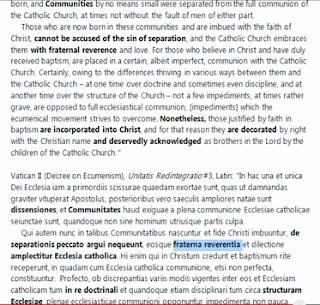 |
| 'fraternal reverence' |
Reverence. That means that many baptised Protestants who attack Catholic teaching, who consider every prayer to Mary an act of idolatry, who call the Mass blasphemous, who reject the Papacy as a myth, who hold that the Catholic Church is pagan and demonic, and there are many such persons, all of them are 'embraced with reverence,' according to Vatican II.
 |
| 'embracing' heretics 'with reverence' |
This is simply blasphemous and directly opposed to the entire history of the Catholic teaching on heretics.
The Church doesn't revere heretics, but condemns and anathematizes them as 'extra ecclesiam.'
As Pope Pelagius II put it, summing up Catholic dogma on people who dissent from the rule of Catholic faith, "If anyone, however, either suggests or believes or presumes to teach contrary to this faith, let him know that he is condemned and also anathematized according to the opinion of the same Fathers."
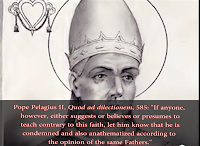 |
| Pope Pelagius II |
The Church doesn't have reverence for heretics, but condemnation and charitable calls to conversion. In addition, this quote from Leo XIII's encyclical, Satis Cognitum is extremely important to consider, for a proper understanding of Catholic dogma on this point.
 |
| Pope Leo XIII, Satis Cognitum |
Notice that Pope Leo XIII teaches that to reject any one of those truths, that is, a truth of the magisterium, causes you to fall, by that very fact into heresy.
Is the Papacy a truth of the magisterium? Of course it is!
Thus, this statement proves that Protestants, the 'Orthodox' and others, who reject the Papacy are in heresy, a fact denied by many defenders of the Vatican II sect.
They will claim that the positions of the 'Orthodox' or even the Protestants don't rise to the level of heresy. That is false. The Protestants and the schismatics rejection of the Papacy by itself proves that they're in heresy.
 |
| Vatican II teaches Protestants communities are a means of salvation |
Vatican II's teaching is the opposite. In fact, the heretical passage in Vatican II that we've been discussing, goes on to teach that Vatican II declares Protestants and schismatic communities are a means of salvation. That is a denial of the dogma, 'Outside the Catholic Church there is No Salvation.'
Vatican II's heretical teaching that Protestants and other heretics are in the Church, has been fully embraced by all of the Vatican II antipopes, including antipope Francis.
They have made many statements which confirm that they consider Protestants and the 'Orthodox' to be in the Church of Christ.
 |
| Benedict XVI's heretical book |
In light of these facts, to assert that Vatican II's teaching on the Church on heretics and schismatics, is consistent with traditional Catholic dogma, is to lie and defend heresy.
It is to bear false witness, and commit mortal sin.
To assert that the Catholic Church could promulgate the evil teaching we've just considered in Vatican II, is blasphemous.
Vatican II's teaching is a denial of the Catholic dogma taught by the Council of Florence, Pope Leo XIII and many other Popes."






